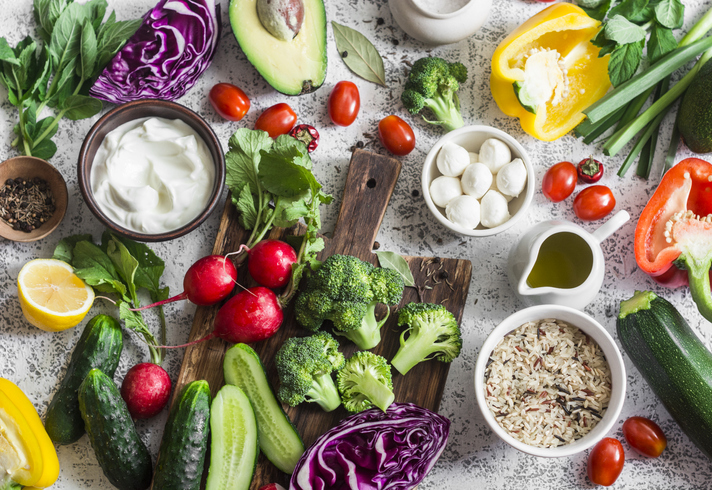
Demystifying Healthy Eating
March is Nutrition Month! This year’s theme is “good for you” and emphasizes that healthy eating looks different for everyone.
What does healthy eating mean to you? You might think that healthy eating means having to eat certain foods or having to restrict foods you enjoy. Rather, it is about finding a pattern of eating that works for you and your family. Healthy eating looks different for each family and can depend on grocery budgets, busy schedules, cooking skills, food preferences, culture and food traditions, health conditions, and many other factors.
Here are 3 tips to demystify healthy eating:
- It can be affordable. There are many ways you can save money and shop on a budget at the grocery store while still eating nutritious and filling foods.
- It can be simple. You don’t have to spend hours in the kitchen making a meal. Meal planning and prepping can help save you time getting meals on the table.
- It starts in the kitchen. Knowing how to cook and navigate your kitchen is a great way to develop healthy eating habits and be able to customize your food to your liking. If you would like to brush up on your skills, you might consider taking a cooking class or watching a tutorial video.
Culture and Food Traditions
Food and culture often go hand in hand. Traditions may impact what foods are enjoyed, how they’re prepared, and where or when it’s eaten. Expressing culture through food choices is also a great way to enjoy a variety of foods and pass on meaningful traditions to kids. If you’re unsure how to involve kids in the kitchen, learn about cooking skills by age level.
Foods that are enjoyed often can be adapted to make them healthier while maintaining the traditions behind them. Some ideas to boost the nutrition-profile of traditional dishes are:
- Substituting animal fats with vegetable oils, such as olive oil
- Adding more fruits or veggies
- Swapping refined grains with whole grains
- Replacing excess salt with natural flavours from herbs or spices
It may seem new, but making food more healthy is often easier than we think! Some examples of saving traditional aspects while giving them a nutrition boost include:
- Incorporating the tips above to add a twist to special occasions such as Thanksgiving
- If baked goods rich in added sugar and refined flour are a staple at family gatherings, consider a reduced sugar or whole grain substitute such as whole grain banana bread
- Trying a chocolate avocado mousse if your family is used to a rich and creamy dessert during special holidays
It is important to know that there is no one-size-fits-all approach to healthy eating. If you require additional help or if you are concerned about a family member with an allergy or health condition, it is best to work with a dietitian to discuss you and your family’s unique nutrition needs. To access a dietitian call HealthLink BC at 8-1-1 Monday to Friday, 9am-5pm for free from anywhere in the province. You can also visit www.healthlinkbc.ca for reliable and accurate nutrition information. For more Nutrition Month tips and ideas check out https://www.unlockfood.ca/en/NutritionMonth-2021.




